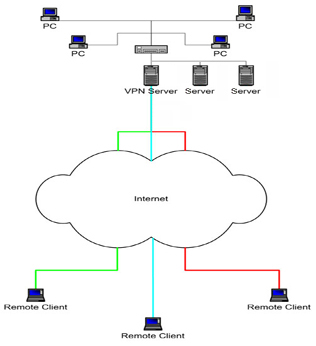
There are 2 steps involved to decide which VPN licenses you need.
1. You need a separate license for every installation of WinGate VPN
You need to figure out how many installations of the software you need, since you need to purchase a separate license for each installation. You will need one installation for every LAN you want to join into the VPN, or for every remote single user that will be joining the VPN. For example, if you want to connect a small network to the VPN, you would need a gateway license for that network. If you want to allow a mobile user to dial up into the VPN, you would need a single user license for that user. This means that the minimum requirement for any working VPN is two licenses.
2. You need to decide the size of each license
For every separate LAN you wish to be able to participate in the VPN, you need to figure out what size gateway license you require. This is based on the size of that LAN. For a LAN with say 25 computers on it, most of whom want to access the VPN, you would need a gateway license for 25 user LAN. If say only 2 of these computers were going to use the VPN, then you could use a gateway license for 3 user LAN
Our white paper titled Understanding WinGate VPN explains this in more detail, and is a highly-recommended read for new WinGate VPN users.
Example
Say you have a main office network, and you wish to allow 3 remote users to work from home. You have 3 company servers (including the VPN gateway) that you wish remote users to be able to access on your network, and 2 PCs out of 4 total on the network that you wish to be able to communicate with the remote users. This makes a total of 5 machines on the local network (3 servers and 2 PCs) that will access the VPN. For the office VPN gateway, you would therefore purchase a WinGate VPN gateway license for 6 user LAN
For each remote client you would purchase a WinGate VPN Single user license.
